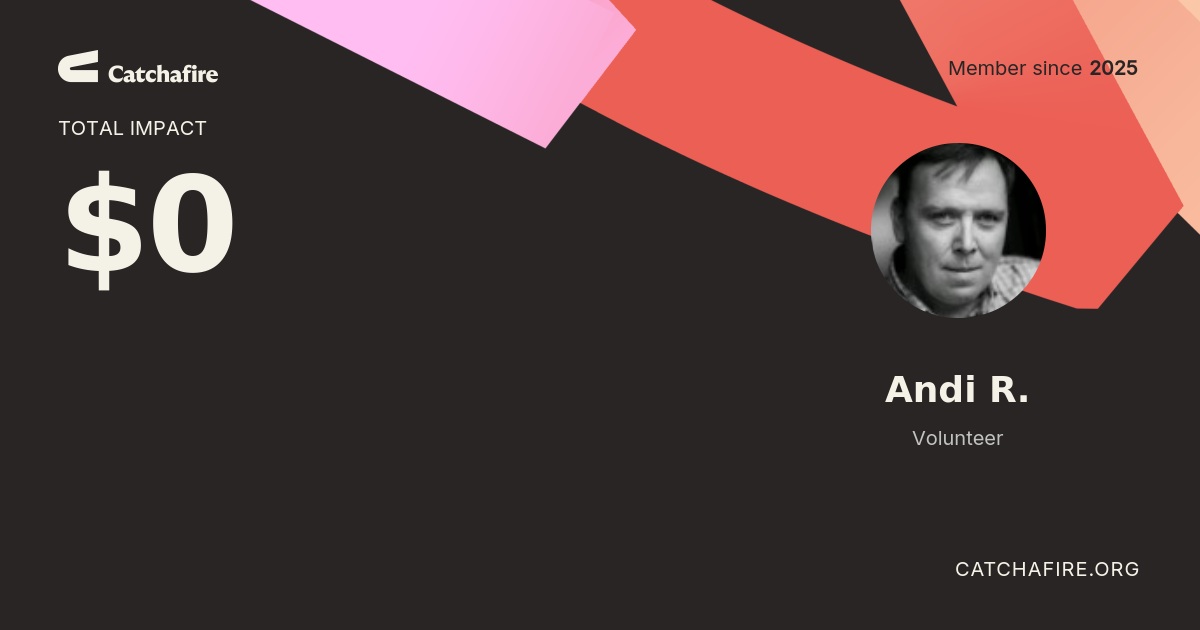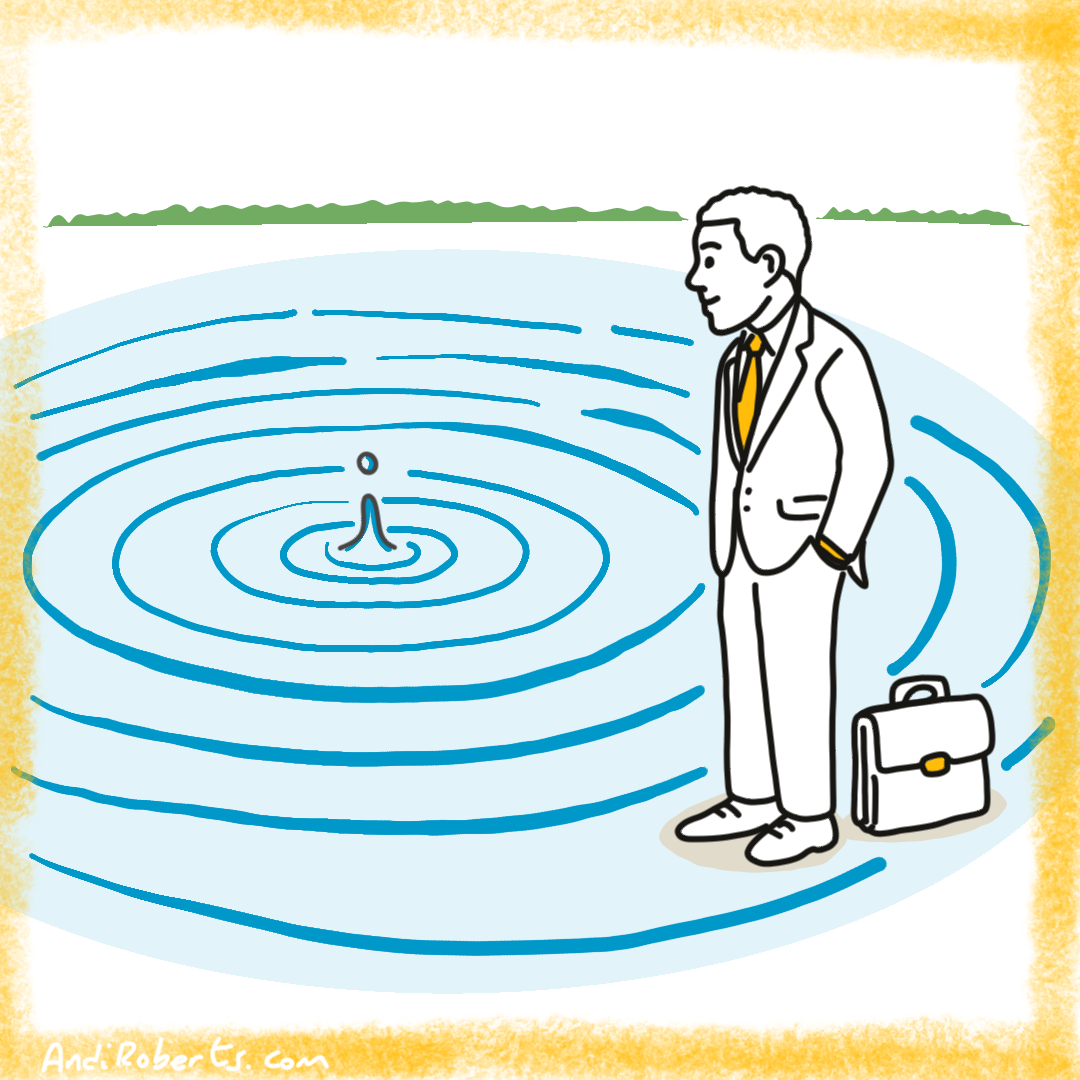Senior leaders are not short of information or ideas. Their days are full of presentations, dashboards, and competing strategies. What is scarce is somewhere to think without performing. At the executive level, every conversation carries expectation: boards want certainty, teams want reassurance, and markets demand results.
The paradox is relentless. Leaders are asked to act quickly while thinking deeply, to project confidence while wrestling with doubt, to deliver quarterly numbers while building cultures that last. These are not problems to be solved with another framework or initiative. They are tensions to be lived with honesty and courage.
Executive coaching has become a core practice at the top of organisations because it makes room for this work. It offers leaders something rare: a confidential space to test assumptions, face uncomfortable truths, and make choices before those choices shape the future of the system they lead.
What executive coaching really is
Executive coaching is a structured, confidential partnership between a leader and a professional coach. It is not a performance review disguised as dialogue, nor a last resort for struggling executives. Unlike mentoring, which is based on advice, or therapy, which addresses past experience, coaching is forward-looking. It is anchored in the leader’s current challenges and future responsibilities, designed to strengthen both individual effectiveness and organisational outcomes.
The evidence for its impact is strong. Studies consistently show that more than 80 percent of organisations that invest in executive coaching report positive returns (ICF, 2023). One landmark study calculated a 529 percent ROI once productivity gains and retention were measured (MetrixGlobal LLC, 2001). Leaders who receive coaching are also 3.5 times more likely to succeed at strategy execution compared with peers (Korn Ferry Institute, 2018). And importantly, coaching helps leaders sustain behavioural change over time, something that workshops or training alone rarely achieve (Coutu & Kauffman, 2009).
The benefits are not just personal but organisational:
-
Improved decision quality, with leaders reporting greater clarity and confidence in complex choices (ICF, 2023).
-
Enhanced culture and engagement, with more than 86 percent of organisations citing positive cultural impact (ICF, 2023).
-
A stronger leadership pipeline, as coaching accelerates readiness for broader roles (DDI, 2021).
Put simply, executive coaching works because it connects the leader’s inner clarity with the organisation’s outer performance. It equips leaders not with answers but with the capacity to face paradox and act with greater confidence, resilience, and alignment.
Why senior leaders need coaching
The higher leaders rise, the fewer places they have to speak without performance. Every word carries weight with boards, investors, regulators, and employees. They are visible to everyone, yet often unseen for who they truly are. This isolation is one of the most under-acknowledged risks of senior leadership.
Coaching provides an antidote. It offers a confidential partnership where leaders can wrestle with the realities that cannot be voiced elsewhere. Not the technical questions, which system to buy, which process to streamline— but the human ones: How do I hold authority without becoming distant? How do I face uncertainty without paralysing my team? How do I act quickly when the data is still incomplete?
These questions matter because the pressures of leadership today are unlike those of previous decades. Leaders must navigate:
-
Relentless complexity. Globalisation, digital transformation, and shifting stakeholder demands mean decisions are rarely straightforward. More than 70 percent of executives describe their role as “increasingly complex and ambiguous” (McKinsey & Company, 2019).
-
The speed–thoughtfulness paradox. Markets and crises demand rapid action, yet strategy requires patience and reflection.
-
Scrutiny without sanctuary. Social media, activist investors, and 24/7 news cycles amplify mistakes and magnify doubt.
-
Loneliness at the top. Over 50 percent of CEOs report feelings of isolation, which correlates with lower confidence in decision-making (Harvard Business Review, 2012).
Traditional development programmes often fail to address these realities. Training may build skills, but it rarely changes how leaders think and respond under pressure. Peer groups provide perspective, but not always the safety for full honesty. Coaching is distinctive because it is both safe and stretching: it provides sanctuary without reducing accountability.
And it matters because leaders are custodians of five interconnected domains that determine whether organisations thrive or falter: strategy, execution, resources, human capability, and their own ability to lead.
A coaching conversation in tech
Not long ago, I was working with a senior executive in the technology sector, someone carrying responsibility for a global product line that millions depended on. Their challenge was not a lack of intelligence or resources. The real struggle was the collision of pressures:
-
The board wanted faster market entry.
-
Engineering teams were warning of risks in rushing.
-
Talent was thinning after two years of relentless pace.
-
And privately, the leader admitted they were exhausted but felt unable to slow down without signalling weakness.
In our coaching sessions, we did not talk about product roadmaps or financial forecasts, those were already on the table in every other meeting. Instead, we spoke about paradox. How do you set strategy when you no longer fully believe the trade-offs are sustainable? How do you execute when every sprint wins speed but erodes trust? How do you allocate resources when every “yes” to the market feels like a “no” to your people?
What emerged was not a single solution but a different stance. The leader began to recognise that their resource decisions were telling a story of values, not just numbers. They realised that their silence about fatigue was creating a permission structure where exhaustion was normalised across the organisation. And they discovered that holding authority did not have to mean distance, that vulnerability, expressed carefully, could create more alignment than another slide deck ever would.
The outcomes were tangible. Execution slowed slightly, but strategy sharpened. Resource allocations became more deliberate, with clear reasoning communicated to teams. Engagement scores stabilised, and the leader themselves reported a renewed sense of clarity and confidence in decision-making. None of this came from advice. It came from creating a space where the leader could pause, tell the truth, and recover the freedom to choose differently.
How coaching creates value
Executive coaching creates value where leadership is most tested. Research and practice point to five domains where it consistently makes the greatest difference: decision-making, resilience, stakeholder navigation, succession readiness, and culture alignment.
Decision-making under uncertainty. Seventy-two percent of executives believe bad strategic decisions are as frequent as good ones (McKinsey & Company, 2019). Coaching helps leaders slow binary thinking, surface biases, and explore new options.
Resilience and energy management. Sixty percent of executives end the day feeling depleted (HBR, 2017). Coaching addresses resilience not with surface tips but by reshaping how leaders use and renew their energy.
Stakeholder navigation. Thirty-nine percent of CEOs rank stakeholder trust as their most critical challenge (PwC, 2023). Coaching prepares leaders to engage stakeholders with authenticity and foresight.
Succession and leadership pipeline. CEO succession failure is one of the greatest risks to shareholder value (The Conference Board, 2021). Yet only eleven percent of organisations rate their leadership bench as strong (DDI, 2021). Coaching accelerates readiness by broadening perspective and preparing leaders for enterprise-level challenges.
Culture and team alignment. Seventy percent of variance in team engagement is attributable to the manager (Gallup, 2017). Coaching makes leaders conscious of the culture they create, intentionally or not, and helps them act in ways that strengthen trust and collaboration.
A senior leader in healthcare once described coaching as “the first time I’ve been able to think about who I am becoming, not just what I need to deliver.” That distinction captures the quiet power of coaching: it allows leaders to recover depth in a role that so often demands only speed. Understanding where coaching delivers value is only half the story. The other half lies in how it unfolds, a process that balances structure with discovery.
What the coaching process looks like
Many leaders are intrigued by executive coaching but uncertain about what actually happens in practice. It is not an unstructured conversation, nor is it simply a series of pep talks. Coaching is a disciplined process that balances structure with flexibility, designed to meet the leader where they are and move toward where they need to be.
Typically, a coaching engagement begins with contracting and goal setting. This includes clarifying the purpose of the work, identifying specific outcomes, and agreeing on confidentiality. Research from the International Coaching Federation shows that engagements with clear contracting and stakeholder alignment are significantly more likely to deliver measurable results (ICF, 2023).
From there, the coaching process often unfolds in three interconnected cycles:
-
Discovery – exploring the leader’s context, challenges, and patterns of behaviour. This may include assessments, stakeholder interviews, or reflective exercises. The purpose is to see the current reality clearly, not to rush to solutions.
-
Dialogue and experimentation – the ongoing coaching conversations themselves, where leaders reflect on recent experiences, test new approaches, and examine the impact of their choices. These sessions are anchored in real work and relationships.
-
Application and reflection – between sessions, leaders bring insights back into their roles. The coach then helps them reflect on what worked, what did not, and what can be adjusted. This iterative loop is what makes coaching sustainable compared to one-off training events.
Most engagements last between six and twelve months, with sessions held regularly. Some are supplemented by stakeholder feedback along the way to track impact and hold the leader accountable. A longitudinal study found that leaders who integrated feedback and reflection into their coaching were far more likely to sustain behaviour change beyond the end of the engagement (Coutu & Kauffman, 2009).
It is important to note that effective coaching upholds clear ethical boundaries. Confidentiality and professionalism are central to the relationship. Coaches work within codes of practice that ensure respect, psychological safety, and accountability to both the individual and the organisation’s wider context (Institute of Coaching, 2020).
In short, the coaching process is structured but not rigid, personal but not indulgent. It is designed to give leaders a disciplined rhythm of reflection and action so that insight is continually translated into impact.
When coaching works – and when it doesn’t
Executive coaching is powerful, but it is not a cure-all. Its impact depends less on the brilliance of the coach and more on the readiness of the leader and the conditions in which the work takes place. Naming both sides, the enablers and the barriers, is essential if coaching is to be understood as a serious developmental practice rather than another leadership trend.
When coaching works best
-
Openness to feedback. Leaders who actively seek and integrate feedback grow faster. Research by Zenger and Folkman shows that leaders rated highly for feedback receptivity also scored in the top quartile for overall leadership effectiveness (Zenger & Folkman, 2014).
-
Clear goals tied to real work. Coaching engagements focused on concrete business challenges, rather than vague aspirations, report higher organisational impact (Coutu & Kauffman, 2009).
-
Supportive organisational context. Coaching produces greater returns when line managers, boards, or HR reinforce its purpose while protecting confidentiality (Institute of Coaching, 2020).
-
Trusting relationship. The strength of the coach–client relationship is the single most reliable predictor of outcomes (PwC and ICF, 2017).
When coaching struggles or fails
-
Compliance mindset. Coaching framed as remedial often results in low engagement (Forbes Insights, 2011).
-
Search for quick fixes. Sustainable change requires iterative reflection and practice (Grant, 2014).
-
Lack of sponsorship. Development efforts without managerial support have only a 22 percent chance of sustaining behaviour change (CEB/Gartner, 2013).
-
Closed posture. Coaching falters when leaders resist confronting truths about themselves or their impact. Leaders who avoid self-reflection rarely achieve lasting growth (Boyatzis, 2006).
Coaching works best with leaders who are already high-performing and open to growth rather than those most in need of fixing. It is less an intervention than a multiplier. It helps capable leaders expand their impact and resilience, provided they are willing to engage honestly and follow through in practice.
Common questions about executive coaching
Here are some common questions people have asked me over the years around coaching:
Is executive coaching only for struggling leaders?
No. Quite the opposite and the research shows coaching is most effective for high-performing leaders preparing for greater responsibility. When treated as a remedial tool, it rarely gains traction.
How is executive coaching different from mentoring or therapy?
Mentoring provides advice based on experience. Therapy addresses emotional or psychological healing. Coaching is forward-looking and focuses on leadership effectiveness, decision-making, and impact.
What results can leaders expect from coaching?
Evidence points to stronger decision-making, better execution, improved resilience, and more engaged teams. Some studies report a return on investment of over 500 percent once productivity and retention gains are factored in (MetrixGlobal LLC, 2001).
How long does an executive coaching engagement last?
Most programmes run six to twelve months, with sessions every two to four weeks. Impact increases when coaching is tied to real-time leadership challenges rather than abstract goals.
How confidential is the process?
Confidentiality is central to coaching. While stakeholders may align on goals at the outset, the content of sessions remains between coach and leader. This safety makes genuine reflection possible.
How do organisations measure the impact of coaching?
Typical measures include stakeholder feedback, leadership 360-degree assessments, and tracking business outcomes such as engagement, retention, or strategy execution. Studies consistently link coaching to measurable organisational benefits (ICF, 2023).
How do you choose the right coach?
Fit matters as much as qualifications. Many leaders meet two or three prospective coaches before selecting one they can both trust and be challenged by. Chemistry and relevant experience are strong predictors of success.
What if a leader resists coaching?
Coaching rarely works if imposed. Leaders who see it as punishment often disengage. The best results come when participation is voluntary and linked to goals the leader values.
Is coaching worth the cost?
Yes, when aligned to business-critical challenges. Independent studies show positive returns in most cases, with financial gains often exceeding five times the investment (ICF and PwC, 2017). The less tangible benefits—resilience, culture, trust—amplify the financial case.
Can coaching be scaled across an organisation?
Yes. While executive coaching is usually one-to-one, many organisations now integrate it into leadership programmes, team coaching, and digital coaching platforms to build capability more widely. I have a global network of coaches who support me.
Conclusion – an invitation
Executive coaching is not about fixing broken leaders or teaching new tricks. It is about creating the rare space where senior leaders can pause, listen to themselves, and face the paradoxes of leadership without pretence. The evidence shows it works: better decisions, stronger execution, healthier teams, and greater resilience. But the deeper value lies in restoring freedom, the freedom to choose how to lead when the weight of expectation is heaviest.
Every leader has places they cannot easily go in the company of colleagues, boards, or stakeholders. Coaching is where those conversations can happen, honestly and without performance. The question is not whether coaching works, but whether leaders are willing to enter that space of reflection and take what they discover back into the work of leading.
If you had one place where performance did not matter and only the truth did, what conversation would you choose to have?
Have you had executive or senior leadership coaching? If so, how was it?
What were your key insights about the process and impact?
Do you have any recommended resources to explore?
Thanks for reading!
References
-
Boyatzis, R. (2006). Intentional Change Theory from a Complexity Perspective. Journal of Management Development, 25(7), pp.607–623.
-
Corporate Executive Board (now Gartner) (2013). Improving the Odds of Success in Leadership Development. CEB/Gartner Research Report.
-
Coutu, D. & Kauffman, C. (2009). What Can Coaches Do for You? Harvard Business Review, January 2009.
-
Development Dimensions International (DDI) (2021). Global Leadership Forecast 2021.
-
Forbes Insights (2011). Executive Coaching Survey: The ROI of Coaching. Forbes Media.
-
Gallup (2017). State of the Global Workplace. Washington, DC: Gallup Press.
-
Grant, A. M. (2014). The Efficacy of Executive Coaching in Times of Organisational Change. Journal of Change Management, 14(2), pp.258–280.
-
Harvard Business Review (2012). The Loneliness of the CEO. Harvard Business Review, May 2012.
-
Harvard Business Review (2017). Manage Your Energy, Not Your Time. Harvard Business Review, February 2017.
-
Institute of Coaching (2020). The Science of Coaching: Evidence-based Insights for Leaders. McLean Hospital, Harvard Medical School Affiliate.
-
International Coaching Federation (ICF) (2023). 2023 Global Coaching Study. Lexington, KY: ICF.
-
Korn Ferry Institute (2018). The Real Value of Executive Coaching. Korn Ferry Research Report.
-
McKinsey & Company (2019). Untangling Your Organization’s Decision Making. McKinsey Quarterly, June 2019.
-
MetrixGlobal LLC (2001). Executive Briefing: Case Study on the ROI of Executive Coaching. MetrixGlobal Research Report.
-
PwC (2023). 26th Annual Global CEO Survey. London: PricewaterhouseCoopers.
-
The Conference Board (2021). CEO Succession Practices: 2021 Edition. The Conference Board Research Report.
-
World Health Organization (WHO) (2019). Burn-out an “Occupational Phenomenon”: International Classification of Diseases. Geneva: WHO.
-
Zenger, J. & Folkman, J. (2014). The Importance of Feedback. Zenger Folkman Research Report.




Leave A Comment